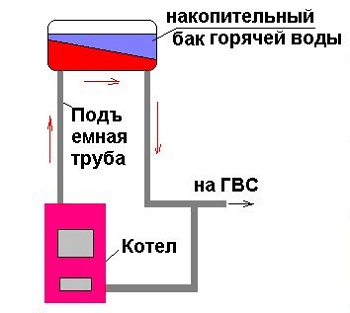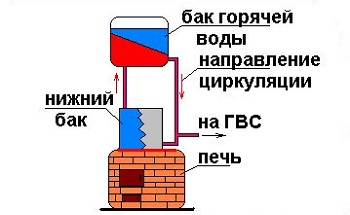Many owners of private houses and summer residents living in nature in summer time year, face the problem of water supply country house. We can recommend you to use additional water storage tanks, which allow you to easily store water in the summer season. Such tanks are made of high quality materials, are hygienic, environmentally friendly and allow you to store water without losing its qualities.
The use of such additional water tanks and containers allows solving problems with clean water supply. drinking water or watering the backyard. Water can be collected in such tanks by gravity or come from pumps located inside the well. It is only necessary to correctly plan the water supply system with such a tank for storing water, as well as choose it correctly, correctly performing the subsequent installation of such additional tanks.
Varieties of water storage tanks
All such containers can be divided into several categories. First of all, this is the material from which the tank is made. If initially stainless steel tanks were popular, today environmentally friendly food-grade plastic is increasingly used, which eliminates material corrosion, reduces cost and provides the ability to store large volumes of water for a long time.
Depending on their shape, it is customary to divide horizontal, vertical, rectangular flat water tanks. Such containers can be made with different sizes, and their volume ranges from 150 liters to 5000 liters. Accordingly, depending on the specific variety, a method of installing such water tanks is chosen, which can be mounted directly inside a private house, installed on a canopy in the open air, or dug into the ground, which allows you to install large containers, while saving free area of the site.
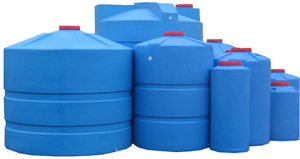
Quality and affordable plastic water storage tanks
Plastic tanks are made of durable food-grade polyethylene, which has excellent frost resistance characteristics. The latter allows such tanks to be located outdoors, without fear of damage to the container when it freezes inside the water. Currently, on sale you can find a variety of storage tanks that are designed to store water and differ in their size. If you plan to install such a container in an apartment or inside a private house, then the optimal volume is 100-200 liters. For outdoor installation, you can choose larger tanks that can hold up to 1000 liters.
Tank overview
If you are looking for such a plastic tank for installation in a private house or on suburban area we can recommend you the Elgad CV 500D model. Such a tank is made of high quality plastic, has a volume of 500 liters and is intended for storing clean drinking water and diesel fuel. This cylindrical container has a screw cap and is highly resistant to aggressive substances. This product does not change physical properties liquids that are stored in it. This is achieved through the use of environmentally friendly food-grade plastic. It is only necessary to take into account the fact that such tanks are not designed to work under high pressure. The operating range is from -40 to +50 degrees.
Plastic water tanks of the AQUATEK ATP 1000 model are equipped with a special float, which makes it easy to control the water level in the tank. The tank has a rectangular shape and is great for indoor installation. They are made of high strength polyethylene, which allows for rigidity and resistance to stress. Such a tank has a volume of 1000 liters and is intended for floor mounting indoors.
Absolutely any plumbing needs devices that smooth out jumps and uneven water flow. They save the network from water hammer, maintain pressure in the system in the absence of electricity (they do not work), and are accumulators of oxygen released from the water. Thanks to such devices, the service life of pipelines and equipment increases significantly. By design, such tanks are divided into simple containers (open type) and membrane accumulators (closed type).
Accumulator for individual water supply
In the private sector, as a rule, closed tanks are used. They are much simpler than others in design, installation and operation. Small dimensions contribute to the placement of the device in any room, regardless of the location of the water supply and well / well. The volume of the tank is determined based on the daily water consumption of the owner (or group of owners). The body is made in the form of a metal barrel, inside which a rigid rubber membrane is installed. It divides the working area of the unit into two sections - water and air. Thus, the best coefficient of interaction of the nominal (water) and given (air) heads is achieved. The hydraulic accumulator allows you to actively use any type of pump or water supply station.
The scheme of the water supply system at home with a tank
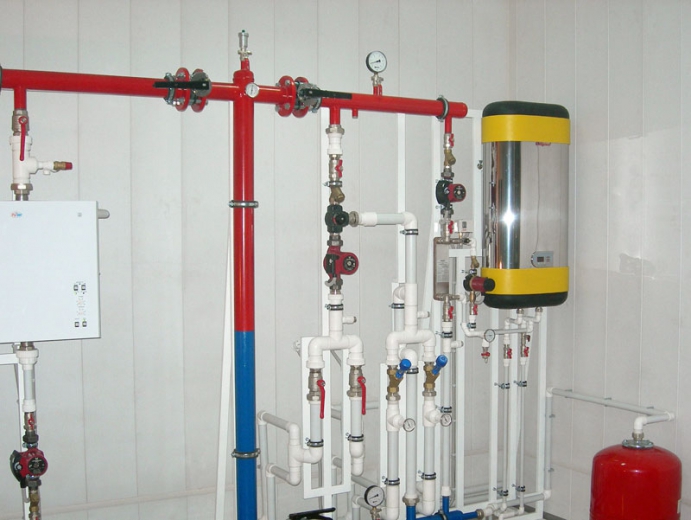
The pumping station pumps water from a source (well / well) into this unit. Upon reaching the state of full filling, the float (level regulator) closes the inlet through the lever. The control unit, reacting to this, de-energizes the electric drive of the pump. Water stops flowing into the tank until the moment of direct analysis. If the user opens the faucet/faucet, the level in the tank drops accordingly and the pump starts working again. Such operational features help to save electricity and extend the life of the equipment.
How to choose the right tank (hydraulic accumulator)
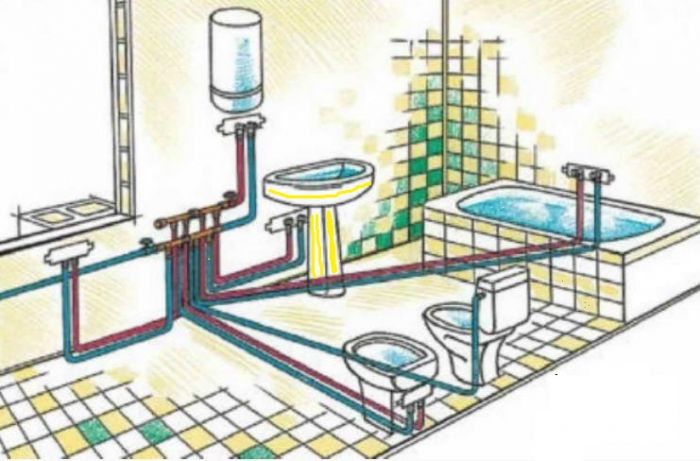
When deciding what volume a storage tank for water supply should have, it is good to keep in mind such experimentally established dependencies:
the pump turns on the more often, the smaller the working area of \u200b\u200bthe device has;
with a small volume of the water chamber of the tank, pressure drops in the water circuit occur more often;
the larger the volume of the accumulator, the longer it will be filled (the duration of the pump increases);
the higher the air pressure, the stronger the water pressure during parsing and vice versa;
the volumes of horizontal and vertical devices are different, but there is no fundamental difference in operation.
It is far from always possible to provide a country house or cottage with an uninterrupted supply of drinking water. The reasons may be different, but the best solution in such cases will be the water supply system of a private house with a storage tank.
By itself, such a tank is the simplest design. But its installation and connection to the system can cause questions and difficulties. To avoid them, read this article.
In what cases will the storage tank help out
It is not enough for a modern person to simply have water in the house. It is necessary that it flow from the tap, and with good pressure for the normal operation of water folding devices. And in some cases, only a storage tank for water supply, built into the system, can provide such work.
What are these cases:
- When there are none on or near the site, and their device is impossible. In such a situation, only water supply is possible with a storage tank, which is periodically filled from a tank truck.
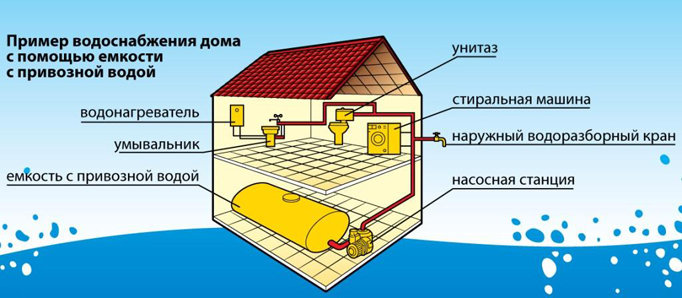
- When in the house centralized water supply from the city or village network, but water is supplied with frequent interruptions or according to a certain schedule.

- When you have your own well or well, but they have a low flow rate and cannot meet your needs at any time, because the water in them disappears during a long continuous intake.
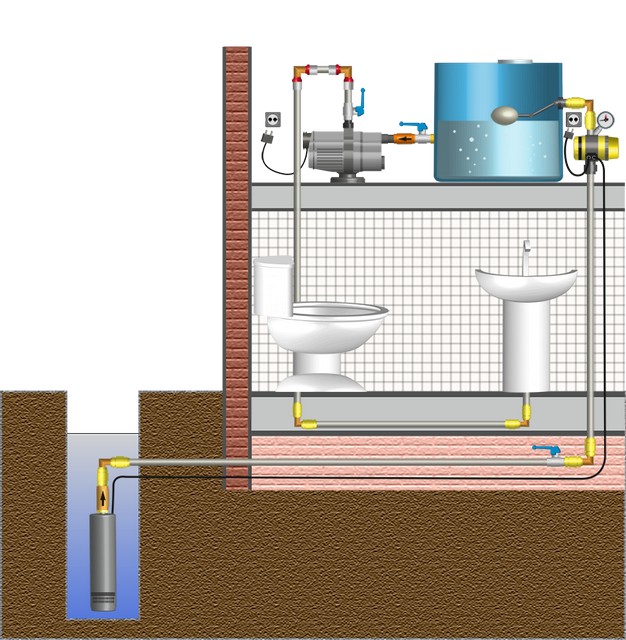
- When there are frequent power outages, without which no pump can work.

In any of these situations, the stock of water accumulated in the tank earlier will allow you not to experience discomfort from its absence from several hours to several days. It depends on the volume of capacity, the number of users and the usual consumption.
Ways to connect storage tanks
The tank can be connected to the system with two different ways: By placing it at a high elevation or at or below ground level.
top location
Such a water supply scheme for a house from a storage tank is practiced mainly in cases where there are no appliances in the house that need good pressure, and the residents have a minimal need for water - to wash, wash dishes, etc.
And also with frequent power outages. Because water from a tank installed on a roof, attic or overpass flows to consumers by gravity, and such a system does not depend on the presence of voltage in the network.
Advice. When designing a gravity system for supplying water from a tank, keep in mind that a pressure of one atmosphere gives a height difference of 10 meters between the tank and the tap. And this is without taking into account losses in the pipeline itself.
Such pressure in the system will be insufficient for operation. washing machine and even taking a shower will be problematic. You can increase it by connecting at the outlet of the tank. The advantage of such an installation is its simplicity and ease of maintenance of the tank.
However, do not forget about the disadvantages:
- The storage tank takes up a lot of space, taking away useful space from the house;
- If you install it in the attic or on the street on a special flyover, then you can use water only in the warm season. Or you need to insulate and heat well both the tank itself and the pipes going to it and from it;
- If the instructions were not followed during installation or the system itself has worn out over time, leaks are possible that can cause a lot of trouble.
As you can see, each homeowner deals with these issues differently depending on the needs of the family.
- So that the water does not freeze, the tank is installed on a heated second floor or attic, sacrificing area.
- Or they use electric heating of a container standing in the attic. And they pay extra for electricity.
- Or they simply put it on the cabinet, content with the minimum pressure in the system.
bottom location
It is more common and effective method accommodation for houses with permanent residence and all the usual amenities for a city dweller. Such a water supply system with a storage tank is necessarily equipped with an additional pump or. Without them, the water itself will not flow to consumers, and with it you can get any necessary pressure.
There are also several options for lower placement:
- Ground- when the container is used only in the summer and does not need insulation;
- Underground- the tank is buried in the ground, and only the neck is brought to the surface, providing access to it for repair and maintenance;
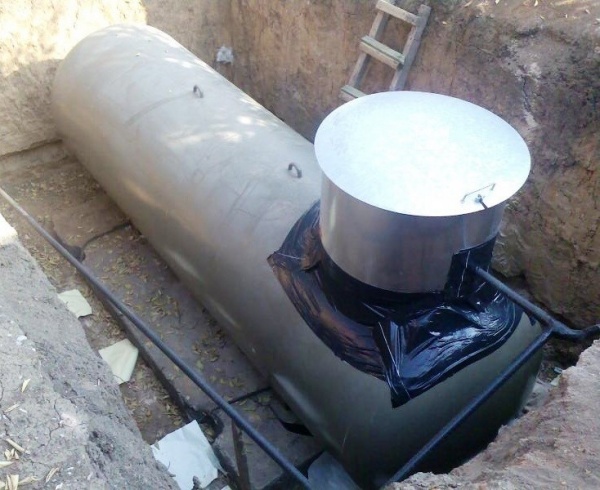
- Basement- when the house has a heated basement or technical room.
The last option is the most convenient, since the container does not need to be insulated, there is always access to it and it does not take up usable space.
The second most popular is the underground option. It also allows you not to use the area of \u200b\u200bthe house, but in this case, cleaning and repair will be fraught with certain difficulties. And the upper part, located above the freezing level, will also have to be insulated.
In addition, not every container can be buried in the ground. It must be strong, with thick walls, stiffeners or metal formwork. Otherwise, you need to build a rigid shell for it.
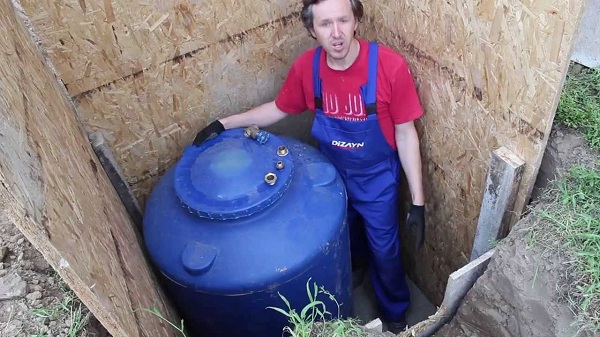
It is important. When installed underground, the bottom of the tank should have a slope of 12-15 degrees so that the suspended particles contained in the water settle in one place and it is easier to remove them through the hatch.
Design features
The device of the storage tank does not depend on the installation location. There are only a few nuances.
The container is supplied with the following structural elements:
- float valve. It prevents it from overflowing and turns on the pump when the water level reaches the minimum mark.
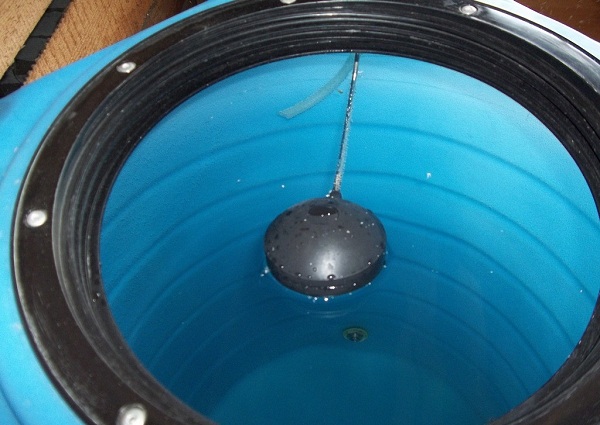
- overflow pipe in the event of a broken float switch. It is located at the top of the tank and is connected to the sewer.
- Drain pipe at the bottom. Designed to remove sediment. They are equipped with storage tanks for water supply, located at the top or in the basement of the house. Underground tanks are cleaned by the upper hatch.
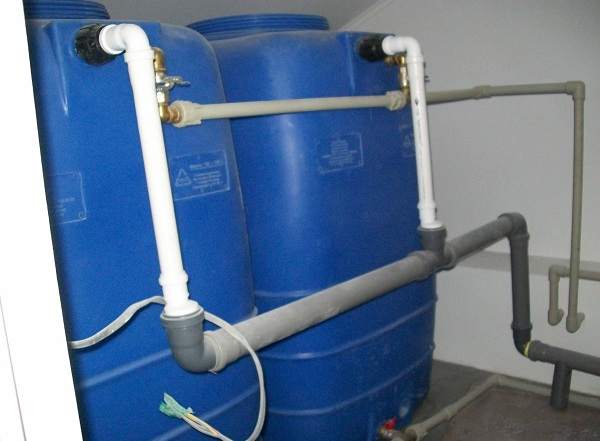
- Inlet filter, will retain some of the suspended particles. It can also be installed at the exit, equipped with a finer mesh.
- Ventilation pipe or breathing valve. If they are not installed in the lid of the tank, when the water is drained, the walls of the tank may flatten under the influence of atmospheric pressure.
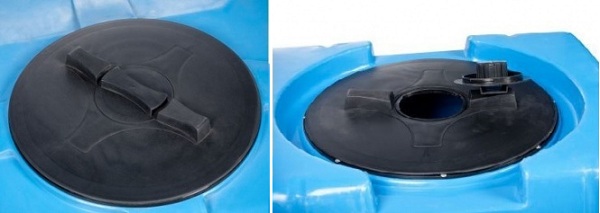
Advice. A diffuser on the supply pipe will prevent water from bubbling and mixing with sediment that has settled to the bottom.
Schemes of water supply systems with a storage tank
The water supply scheme of a private house with a storage tank depends primarily on its location and type of source, as well as on the need to increase the pressure in the system and prepare hot water. And the choice of the pump itself, which supplies water to the drive, and related equipment is also done for a reason.
For example:
- If water is taken from a well up to 7-8 meters deep, it is enough to buy. A check valve must be installed on the suction pipeline to prevent the flow of water back into the source;
- If from a depth of no more than 15-18 meters, the surface pump must already be equipped with an external ejector;
- If from a deep artesian well, it can be extracted only with the help of a deep submersible pump. In this case, the check valve is placed on the pipe leading from the pump to the house.
Advice. To protect the equipment from breakdowns and overheating, it is necessary to install a dry-running protection relay on it, and a level sensor in the source itself. This is especially important if the well or well is marginal.
Water supply storage tanks - connection diagrams can be as follows:
As you can see, an additional pump on the supply pipeline from the storage tank to the system allows not only to increase the pressure in it, regardless of the position of the tank, but also to install a boiler for preparing hot water.
If you often turn off the electricity, both this pump and the boiler will be useless. All that remains is the supply of cold and hot water according to the latest scheme, with a second tank. Its volume is selected according to your needs, but the larger it is, the longer the water will cool in it.
This can be used to heat the first tank in winter. For example, a storage tank for hot water supply of 1000 liters, installed next to the tank cold water, will not let it freeze during the day, even if during this time the water in it is not heated.
There are several ways to heat water for this scheme:
| Scheme | Description |
|
|
Using a gas or electric heating boiler. |
|
|
Using a stationary wood burning stove. |
|
|
Using a tubular electric heater - a heating element. |
How to choose a drive
When choosing a tank, you need to pay attention to two main parameters: volume and material of manufacture.
Volume
The storage tank should not be confused with a hydraulic accumulator. And it's not even that the second one is a pressure tank that regulates the pressure in the network due to the pressure of compressed air on the rubber membrane.
The maximum volume of the accumulator is only 100 liters, the standard one is 24-50 liters. This is very little to supply water in the usual way in the situations described above.
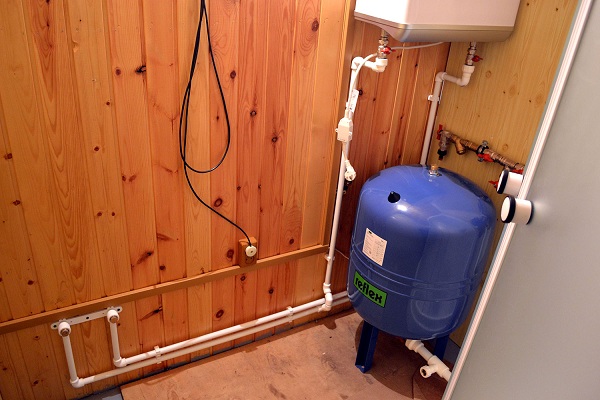
To understand how much capacity you need, you need to analyze the following factors:
- Required water flow per unit of time. You can calculate it approximately by adding up the nominal consumption of all appliances in the house - faucets, toilets, washing and dishwasher. Another calculation method suggests multiplying daily requirement in the water of one person per number of family members. But this need is different for everyone and also depends on the availability of amenities in the house. It can be 60 or 200 liters per day. Therefore, focus on your habits and conditions.
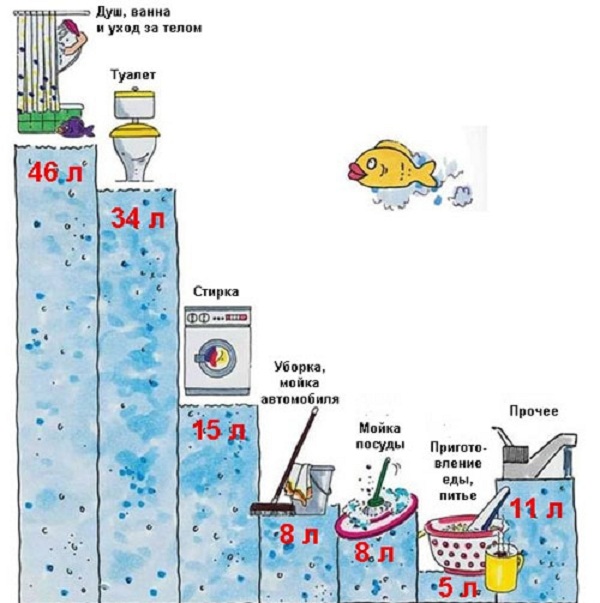
- Offline source performance or work schedule centralized system. For example, if water or electricity is cut off for a maximum of a couple of hours, a 100-liter barrel may be enough for you, and it’s a completely different matter if this happens often and for a long time. It also makes no sense to install a five-cubic capacity if your well can pump no more than 500 liters into it per day.
Material
If you are planning a drinking water supply for a summer residence, the storage tank must be made of materials that do not react with water and do not affect its taste, smell and quality. And this is either stainless steel or food grade plastic.
Increasingly, plastic is preferred as it is much cheaper and more durable, especially when it comes to underground storage. In addition, it is lightweight: even a tank of impressive size can be installed by hand without involving a bunch of assistants or special equipment.
To roughly navigate the prices, look at the options presented in the gallery:
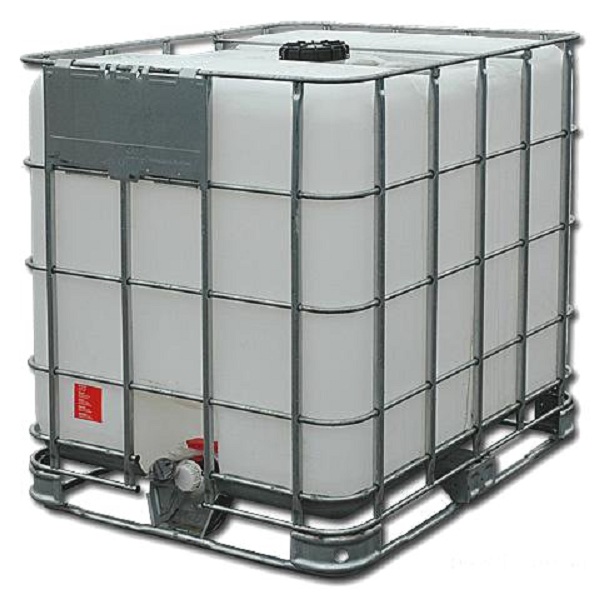
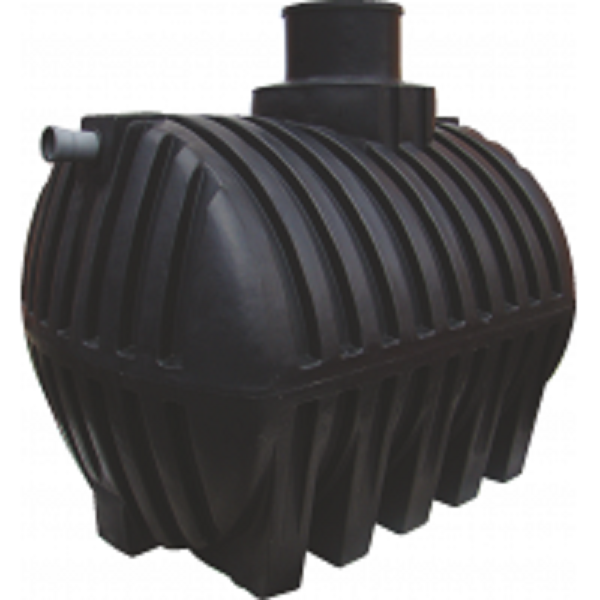
As you can see, stainless steel tanks are many times more expensive. It is more profitable to buy plastic ones, but you need to make sure of the quality of the material and its purpose - for storing drinking water.
Conclusion
Sometimes water supply in a private house with a storage tank becomes the only opportunity to live in comfort, which cannot be provided by any ultra-modern pumping station, nor central water supply. The complexity of creating such a system depends on the location of the tank, your needs and the conditions of the water supply, so in each case you need to choose your own scheme.
It will be the simplest for seasonal country house, but for a country cottage with permanent residence and all the amenities, you will have to spend money and tinker. But the result is worth it.
After watching the video in this article, you will see that “not the gods burn the pots”, and you can do much, if not all, on your own.

